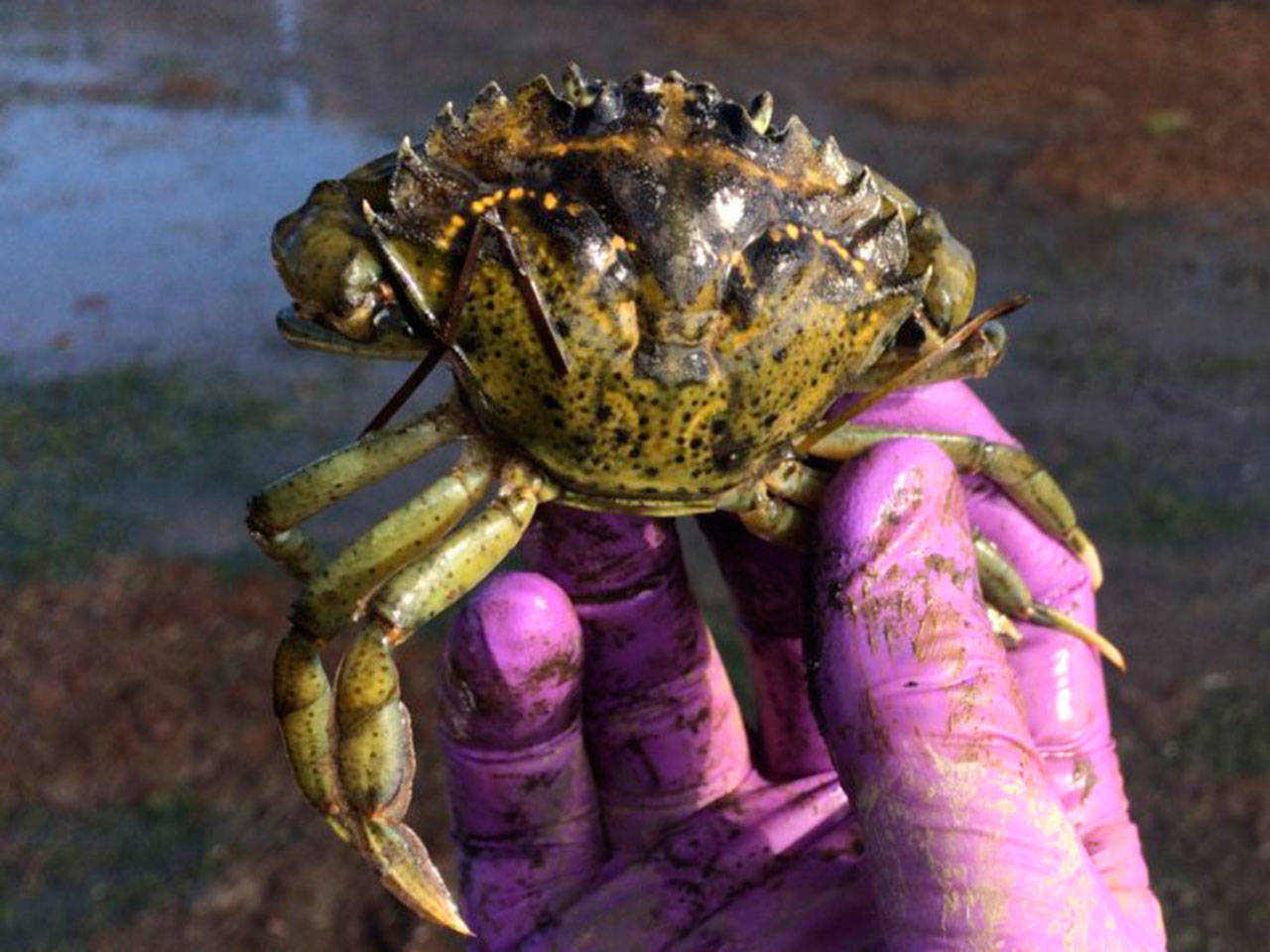Editor’s note: The Crab Team training workshop in Tacoma is currently full. There is still availability in a second workshop on Wednesday at the Padilla Bay National Estuarine Research Reserve.
The University of Washington Crab Team is recruiting new members to study the world of crustaceans and fish around Vashon while keeping vigilant for the invasive European green crab.
Those interested in joining the early detection and monitoring program can attend a free training workshop for aspiring citizen scientists at 9:30 a.m. Monday at the Point Defiance Zoo & Aquarium.
Islander Jeff Adams, a marine ecologist who works for Washington Sea Grant, said KVI and Raab’s Lagoon are both important sites in the Salish Sea, which the crab team — now in its fifth year — evaluates for signs of the predacious green crab. Posing a threat to ecosystems where they are introduced, the green crab is known to prey on many organisms and compete with native fish and birds for food.
Adams said while they haven’t been found on Vashon, green crabs are capable world travelers and have arrived in Washington — they’ve been spotted in the waters near Port Townsend and on the west side of Whidbey Island. Adams said green crabs first made landfall in the United States a century ago as oyster farming took off with the advent of modern commercial fishing.
“It’s possible that kind of an organism can also get moved around by ship ballasts,” said Adams. “If there are enough larvae, they can settle and start a population.”
He said that now is the time to try and stop them from spreading farther along the coast of Washington.
“The main part of it is the early detection of green crab so we can manage and respond and prevent them from spreading,” he said. “The earlier you find an invasive species, the better chance you can get rid of it.”
But Adams said the task of expelling green crabs is difficult, as they can appear to belong to the waters where they settle. Moreover, well-meaning reports of green crab sightings are often unfounded. Adams said those who believe they have positively identified a green crab should leave them be, and instead take photos and email detailed location information to crabteam@uw.edu.
“It’s not super easy to tell the difference. We don’t want people killing native crabs,” he said.
According to Adams, the crab team’s main line of defense is trapping, along with the continual monitoring of the beaches and shorelines where green crabs are known to have converged. Volunteers set traps, collect data on what they catch and hunt for green crab molts — crabs outgrow their shells and shed them. Even if green crabs do not find their way into the traps, said Adams, they give themselves away when they molt.
After the crabs are trapped, Adams said that researchers at UW will perform genetic analyses on them to understand where they’re coming from. That data is then used for education and outreach purposes.
“We do euthanize any green crab we find,” he said.
The training workshop will prepare volunteers for how to identify the variety of animals in Washington estuaries, as well as connect volunteers with others who are passionate about further study and protection of the environment.
“You [will] contribute to the understanding of Puget Sound and ecosystems — contribute to the understanding and protection of them,” said Adams. “The volunteers finding green crabs may be playing a role to keep them from spreading into habitats.”
Adams said it is a perfect opportunity for anyone interested in shoreline restoration and stewardship.
“And you get to handle a lot of crabs,” he said.
That sealed the deal for islander Alex Brown, who has been a member of the crab team for two years. In an email, he said what is most rewarding about working with the Crab Team is “the opportunity to contribute to an important research project alongside other science enthusiasts in the Vashon community.” Brown remembers watching dogfish swim in Raab’s Lagoon with Adams as they processed crab traps together last year and called the experience a favorite memory of his time spent with the team.
For more information about the training workshop and joining the crab team, visit online.



